
Shared Spaces: 4 Cities/4 Plans for Pedestrian, Cycling Safety
This post orginally appeared on RGordonArchitect, the architecture and design blog of Chicago-based architect Robert Gordon.
******
Bikes, Pedestrians, Buses, Trams and Cars; New initiatives to protect cyclists, pedestrians and provide cleaner, safer public transportation
When It All Started
It began slowly, about twenty years ago, people in many cities finally began reacting against the automobile culture that was strangling the central areas. For many people, increasing pollution and the usurpation of public space for driving and parking became too much to bear. Cyclists started venturing into dangerous traffic, pedestrians routinely began disobeying traffic laws and signals. Some forward-looking mayors recognized a new constituency. It was an awakening to find that one could bicycle, or even walk, great distances faster than they could go in a car. At the rate of 10-12 miles per hour on a bicycle, you could reach destinations very quickly. And it was fun and healthy! And the air became cleaner. Organizations like the Congress for the New Urbanism began a movement to make communities more walkable.
I have lived in, and spent a great amount of time in four cities, Chicago, San Francisco, Paris and New York, and have observed these changes become official city policy. There are new bike lane networks, cafes and parklets in streets and much better connection to public transportation. It hasn’t always been easy; drivers reacted to the intrusion on their space, merchants were worried that they would lose customers. Quite the opposite was true, as most shoppers are pedestrians, and cafes are much more comfortable when they aren’t competing with traffic.
By now, many of these changes have been incorporated into municipal code and have become almost commonplace. I will show some examples of these new shared spaces, and I encourage you to submit your own examples from other cities.
Robert P. Gordon,
Architect/Planner
CHICAGO
Protected bike lanes, Chicago
Cyclists are reluctant to ride on streets with automobile traffic, and this has been a big impediment to bicycle riding in cities. Chicago has built some protected lanes as part of its system. This consists of relocating bike lanes near to the sidewalk, with parked cars as a protection from traffic. There are also posts marking the bike lanes.
“Buffered” bike lanes, with only markings separating bikes from traffic are less secure than protected lanes. Marking the lanes helps somewhat, but still leaves cyclists exposed to automobile traffic.
Bike Traffic Signal, Chicago
Separate bicycle traffic signals are intended to create clearer direction to both cyclists and pedestrians.
Bike the (Outer) Drive, Chicago
Once a year, on a Sunday, Lake Shore Drive is closed to automobile traffic and open to cyclists only. This brings tens of thousands of cyclists to the lakefront, giving them dramatic and unobstructed views of the city and the lakefront parks. People see how little time it takes to get to different parts of the city, and how enjoyable it can be if you’re not worried about traffic.
SAN FRANCISCO
Street Parks, San Francisco
San Francisco’s Department of Public Works, and the San Francisco Parks Alliance have designated certain sites in the public way to be used as tiny parks, often supporting local businesses with additional seating and landscaping.
Bus Shelters, San Francisco
San Francisco was a pioneer in the U.S. in setting up “smart” bus shelters which show the expected arrival time of the next bus.
Historic Streetcar, San Francisco
The city has purchased some of their historic streetcars to use along the embarcadero and they are very popular with residents and tourists alike.
Muni trams, San Francisco
San Francisco has a nicely balanced mixture of transportation modes, including buses, trams, cable cars, and access to the regional BART (Bay Area Rapid Transit) system. There is easy transfer between modes and they are fun to ride.
Cable Car, San Francisco
The historic San Francisco Cable Car has set the character for fun public transportation for over a century in the city.
NEW YORK
Cafes in the streets, New York
Manhattan has instituted a new system of claiming streets for pedestrian use, such as cafes and seating areas. While there have been complaints by some residents, they seem to be popular without seriously slowing down traffic. I know Manhattanites will all have strong opinions on this subject, but here’s what it looks like.
Protected bike lanes, NY
Like many other cities, New York is experimenting with protected bike lanes. Considering the traffic in New York, this protection is essential.
PARIS
Street reserved for cyclists and pedestrians, Paris
The City of Paris was early to experiment with alternative means of transportation. Many of us remember when standing on those narrow sidewalks was extremely hazardous as the cars whizzed by and even parked on the sidewalks. They tried various alternatives, such as bikeways protected by solid granite curbs, and streets completely shut down to automobiles during certain regular hours. The banks of the Seine are open regularly during summer months for pedestrians, cyclists and music and theatrical spectacles. Parisians are now voting with their bicycle wheels and roller blades.
Velib, bike sharing, Paris
Paris came up with a plan for bike sharing, since individual storage and maintenance is impractical. For a modest fee, one can rent a bike in one neighborhood, drop it off in another and take a different mode of transport home. Mayor Daley saw these facilities in Paris and became very interested in repeating them in Chicago.
Arriving Bus Info, most bus stops, Paris
Most bus stops in Paris have electronic signs that give current information regarding arrival times for the next buses. There are fewer stops so the time between destinations is shorter.
Tramway, Paris
Most people are familiar with the Paris Metro system which traverses the City at great speeds. There are problems however with overcrowding and inaccessibility for the handicapped. A new “Meteor” train takes people from the center to the east in a matter of minutes. And a new tramway, circumnavigating the City, provides accessible, clean and efficient transportation.



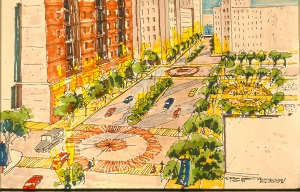
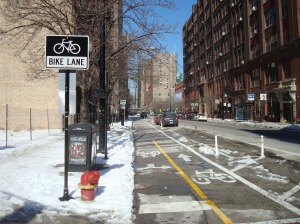

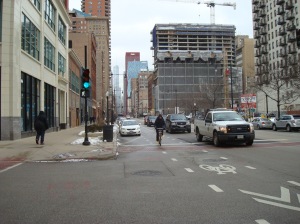


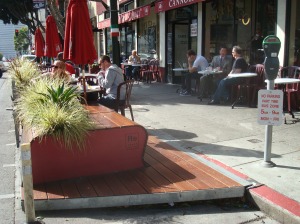
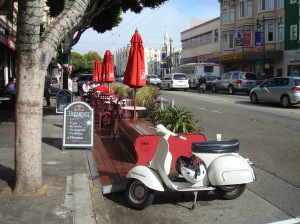




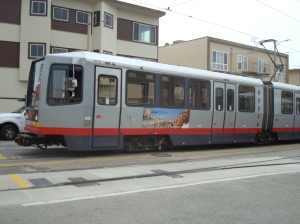


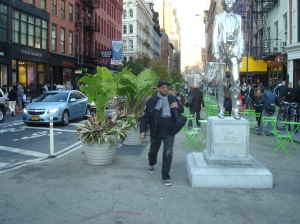

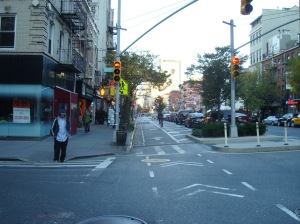
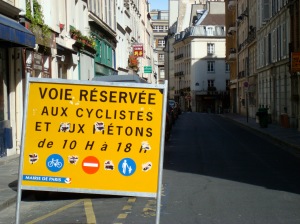

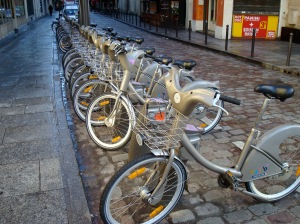

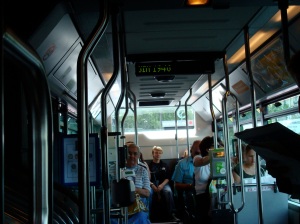
Comments
Write your comments in the box below and share on your Facebook!